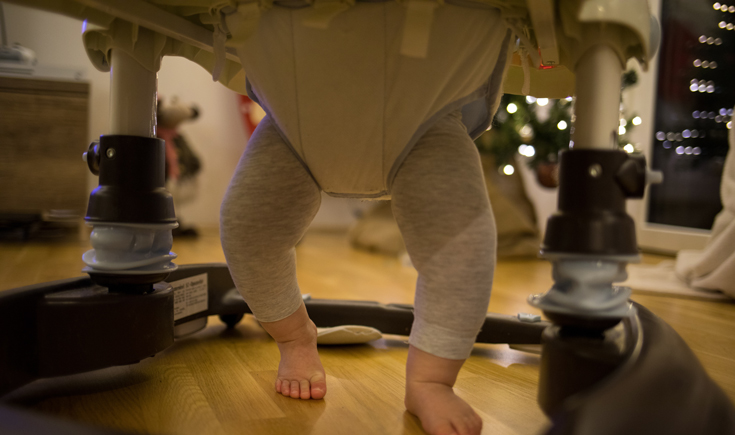

The ACCC (Australian Competition and Consumer Commission) has just released a safety update on the use of baby walkers. Their update includes a new video containing important information for parents and carers about how to be safe when using a baby walker, and how to check if yours has the required safety features.
Baby walkers injure more than 100 children annually
Over 100 children visit emergency rooms in Australia each year from incidents involving baby walkers (this number only includes the serious reported injuries, so the statistics would be greater).
The potential hazards of baby walkers
According to the ACCC Deputy Chair, Delia Rickard, if baby walkers are not used safely:
- Children can suffer serious head or facial injuries from tripping or falling over in a baby walker.
- Toys and other household objects left on the floor can cause a baby walker to tip over and cause an injury, such as head trauma or fractures.
- Unsupervised children in a walker can also gain access to hazardous objects such as kitchen utensils, ovens, benchtops where there might be hot drinks or food, and sharp objects.
How to know if your baby walker has the required safety features
In Australia, the mandatory safety standard requires baby walkers to be fitted with safety features, including clear safety warnings and a braking mechanism.
However, a surveillance project on baby walkers found that non-compliant walkers could still be purchased by unsuspecting consumers. These are mostly sold by off-shore companies through online platforms.
Even if a baby walker complies with the mandatory standard, a braking mechanism may not stop a child from falling down stairs or off a step.
The ACCC is urging parents and carers to follow these safety tips each time your child is in a baby walker:
- Always supervise your child in a baby walker. They should always be in reach of an adult who can prevent them from accessing hazardous areas.
- Ensure the baby walker is only used on flat surfaces, free of objects that could cause the walker to tip over.
- Block off access to staircases, steps, kitchens, and fireplaces.
- Do not place any objects on the baby walker that could cause it to topple over.
- Make sure your baby walker has the safety features required by the mandatory standard.
- Do not leave your child in the baby walker for longer than 15 minutes at a time. Overuse can lead to developmental delays when they are learning to walk.
Many parents allow a child unrestricted access around the home in a baby walker, but the ACCC would like to remind parents and carers that even if they meet the required safety features, they are not child-minding devices. Constant supervision is key to preventing injuries.
Baby walker buying tips
- Look for a baby walker with a braking mechanism.
- Check that any folding mechanism latches securely and will not collapse when assembled.
- Check that there are no sharp edges or points or places that can trap fingers.
- Ensure your child fits properly in the baby walker.























